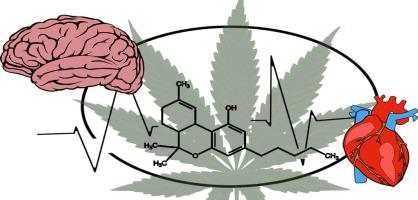Forensic Chemistry ( IF 2.6 ) Pub Date : 2021-01-13 , DOI: 10.1016/j.forc.2020.100303 Vanessa Meneses , Melanie Hernandez

|
Concerns surrounding driving under the influence of marijuana have increased as more states allow medicinal and recreational use. Likewise, the need to understand cannabinoid distribution in the body has also grown in importance. In this study, central blood, peripheral blood, and brain tissue were analyzed for the presence of Δ-9-tetrahydrocannabinol (THC), 11-hydroxy-tetrahydrocannabinol (11-OH-THC), 11-nor-9-carboxy-tetrahydrocannabinol (THC-COOH), cannabinol, and cannabidiol. Postmortem redistribution was evaluated and concentrations across these sample types were compared in a group of drivers fatally injured in a vehicular collision (FID) and a group of individuals not driving a vehicle at the time of death (non-FID). Subjects included seven females and 36 males, ages ranging from 17 to 76 years. The THC, 11-OH-THC and THC-COOH concentrations in these sample types were compared for both groups and ratios were as follows: central:peripheral blood ranged from 0.12 to 5.70, 0.28 to 3.33, 0.27 to 3.08; peripheral blood:brain tissue ranged from 0.24 to 7.81, 0.10 to 6.09, 1.05 to 7.69; and central blood:brain tissue ranged from 0.15 to 9.28, 0.14 to 16.21 and 0.27 to 3.08, respectively. Among the FID group, when brain tissue was available, THC was detected in every case where central blood was positive for THC. In 50% of those cases, brain THC concentrations were greater than the central blood THC concentration. However, without information regarding behavior and performance at the time of death, conclusions as to impairment could not be drawn. A clear pattern of distribution for THC was not identified within any of the sample types evaluated.
中文翻译:

尸体样本中的大麻素分布
随着越来越多的州允许药用和娱乐用途,在大麻影响下驾驶的忧虑也增加了。同样,了解人体中大麻素分布的需求也变得越来越重要。在这项研究中,分析了中央血液,外周血和脑组织中是否存在Δ-9-四氢大麻酚(THC),11-羟基-四氢大麻酚(11-OH-THC),11-nor-9-羧基-四氢大麻酚(THC-COOH),大麻酚和大麻二酚。进行了事后再分配的评估,并比较了一组因车辆碰撞(FID)致死的驾驶员和一组在死亡时未驾驶车辆的人(non-FID)的浓度。受试者包括7名女性和36名男性,年龄从17至76岁。THC,比较两组中这些样品类型中11-OH-THC和THC-COOH的浓度,比率如下:中枢:外周血范围从0.12至5.70、0.28至3.33、0.27至3.08;外周血:脑组织的范围为0.24至7.81,0.10至6.09,1.05至7.69;和中央血液:脑组织的范围分别为0.15至9.28、0.14至16.21和0.27至3.08。在FID组中,只要有可用的脑组织,每当中心血THC呈阳性时,就会检测到THC。在这些病例的50%中,脑THC浓度大于中枢血液THC浓度。但是,如果没有关于死亡时的行为和表现的信息,就无法得出有关损害的结论。在任何评估的样品类型中均未发现THC的明确分布模式。











































 京公网安备 11010802027423号
京公网安备 11010802027423号